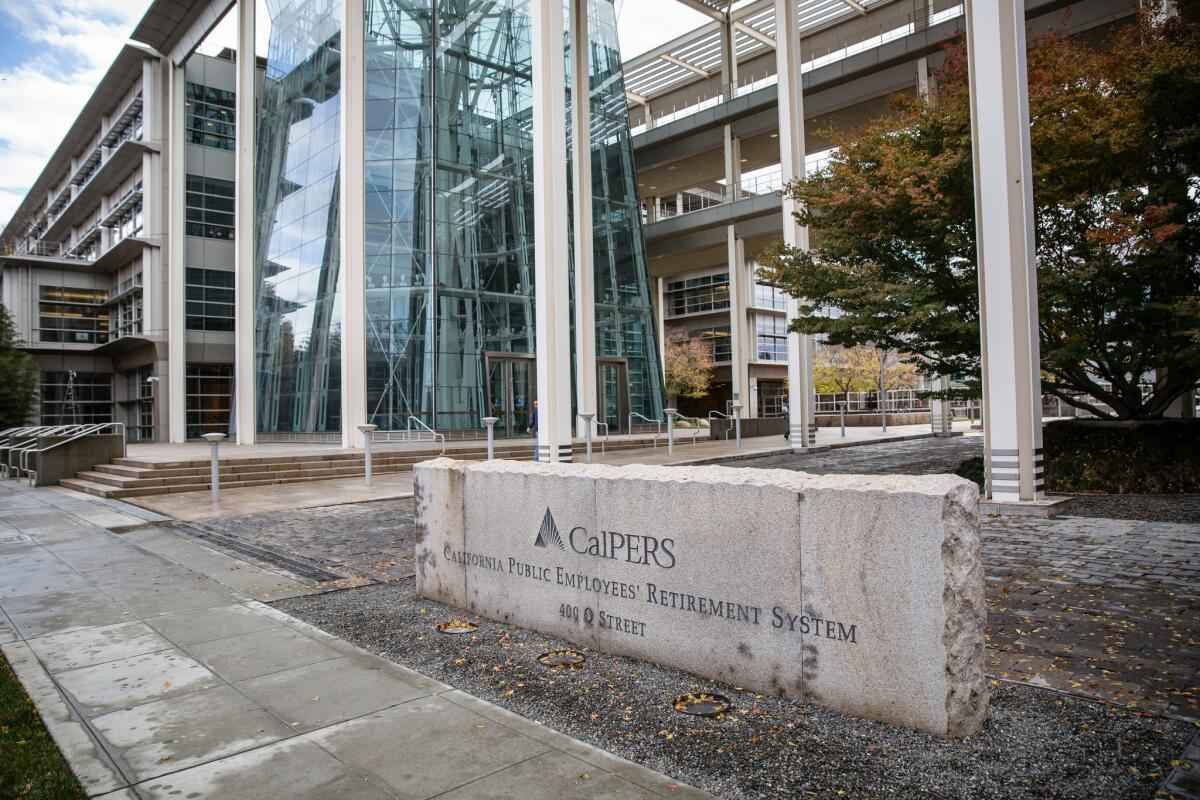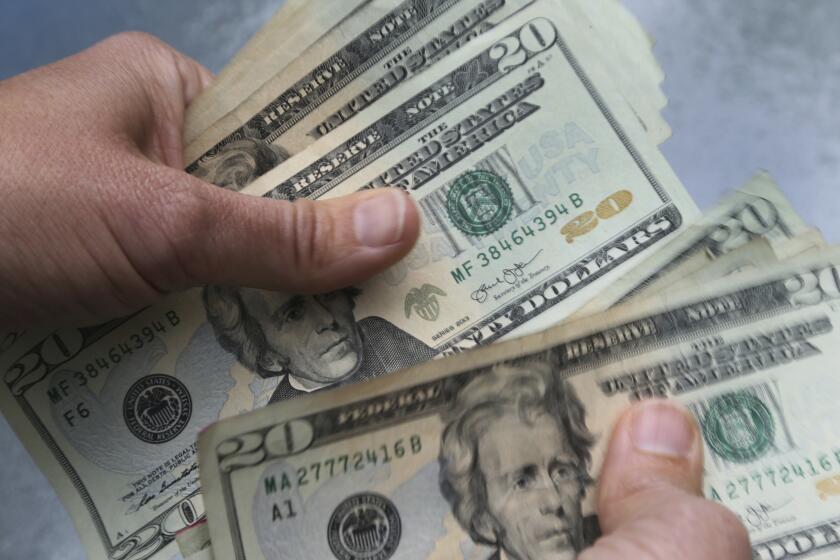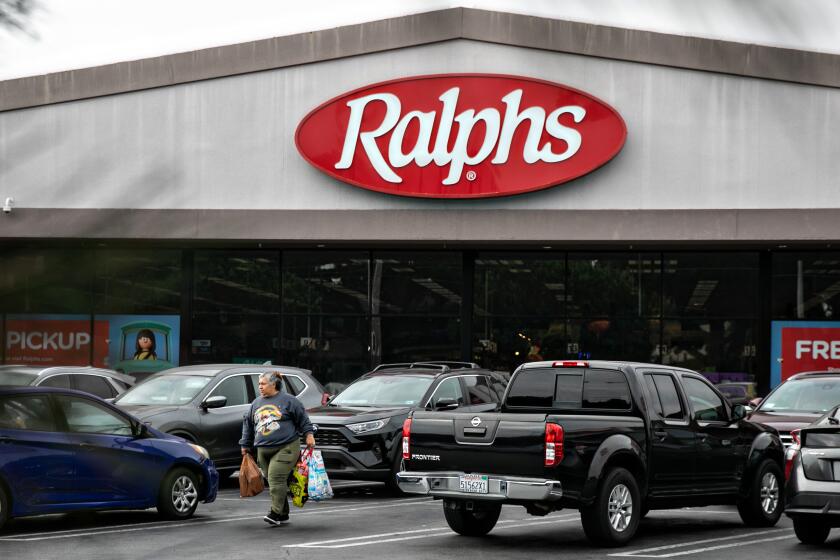Taxpayers will pay billions more as CalPERS lowers estimate of investment returns

- Share via
The board of California’s largest public pension fund approved a plan Wednesday to lower its estimate of future investment returns — a move that will require taxpayers to pay billions of dollars more than expected over the next decades.
For years, the California Public Employees’ Retirement System has estimated it will earn an average of 7.5% or more a year from its investments. Under the new plan, the pension fund will slowly reduce that rate to 6.5%.
The board voted 7 to 3 on Wednesday to approve the plan that will reduce the rate in small increments over the next 20 years.
With investment income contributing less to the cost of government worker pensions, taxpayers must pay more.
“Ensuring the long-term sustainability of the fund is a priority for everyone on this board, and this policy helps do that,” said Rob Feckner, president of the CalPERS board.
The vote was criticized by Gov. Jerry Brown, who had urged the board to move more aggressively to 6.5% rather than stretching the change over decades.
The pension fund’s staff estimated in May that increases in taxpayer contributions would range from 6% to 20% over the coming decades under the plan.
Those boosts are in addition to recently announced increases of 50% to the rates that CalPERS charges cities, the state and other government agencies.
Fast-rising pension costs have already forced many cities to cut library hours, street repairs and other services. Three California cities — San Bernardino, Stockton and Vallejo — filed for bankruptcy protection in recent years at least in part because of rising payments to CalPERS.
To soften the blow to municipal budgets, CalPERS will make the incremental changes only in years of superior investment returns when government finances should be stronger.
Experts say that government pension plans across the country have long overestimated how much they will earn on their investments. And that has made government worker pensions appear less expensive than they actually are.
For example, taxpayers currently pay amounts equivalent to 37% of state firefighters’ salaries to CalPERS to cover their future retirement checks. That payment is based on estimates that the fund’s investments will continue to earn 7.5% over the decades.
But if the investments earn just 6.5%, required taxpayer payments for firefighters jump to an amount equal to 55% of their salaries, according to CalPERS documents.
Compare that to Social Security, in which employers pay 6.2% of salaries and employees contribute an equal amount.
Under the plan approved Wednesday, workers hired in 2013 or later would also pay more for their pensions. But the vast majority of government employees are exempt.
The new policy also requires CalPERS to gradually move more of its $300-billion fund to safer investments such as bonds, which earn lower returns. The staff hopes to avoid a repeat of the 28% plunge it suffered in 2008 during the financial crisis.
“Risk levels will increase in the future if we don’t take action,” Alan Milligan, CalPERS chief actuary, warned at a board committee meeting this week.
So far this year, CalPERS investments have lost nearly 5%, adding to its $117-billion debt for pensions already owed to workers.
The pension fund’s average return over the last decade was 5.2%.
In recent weeks, Gov. Brown’s staff has repeatedly called on CalPERS to move more aggressively to a lower expected return rate and safer investments.
“I am deeply disappointed that the CalPERS Board reversed course and adopted an irresponsible plan that will only keep the system dependent on unrealistic investment returns,” the governor said Wednesday in a news release.
Taxpayers’ contributions to CalPERS have never been higher. Yet the fund still sends out more money in retirement checks than it brings in.
Last year, governments paid CalPERS $8.8 billion, while employees chipped in an additional $3.8 billion, according to the fund’s financial statements. Those combined amounts fell $5.2 billion short of the $17.8 billion paid out to retirees.
The shortfalls are caused by the more lucrative retirement benefits that state legislators voted to award to government employees in 1999 at CalPERS’ urging.
At the same time, the government workforce is aging and more baby boomers are retiring. CalPERS said it expects that retirees will outnumber current workers sometime in the next 20 years.
Twitter: @melodypetersen
ALSO
A year after devastating cyberattack, Sony Pictures is returning to normal
‘Hunger Games’ finale expected to gross $120 million in opening weekend
IPic sues AMC and Regal over business dispute
More to Read
Inside the business of entertainment
The Wide Shot brings you news, analysis and insights on everything from streaming wars to production — and what it all means for the future.
You may occasionally receive promotional content from the Los Angeles Times.











